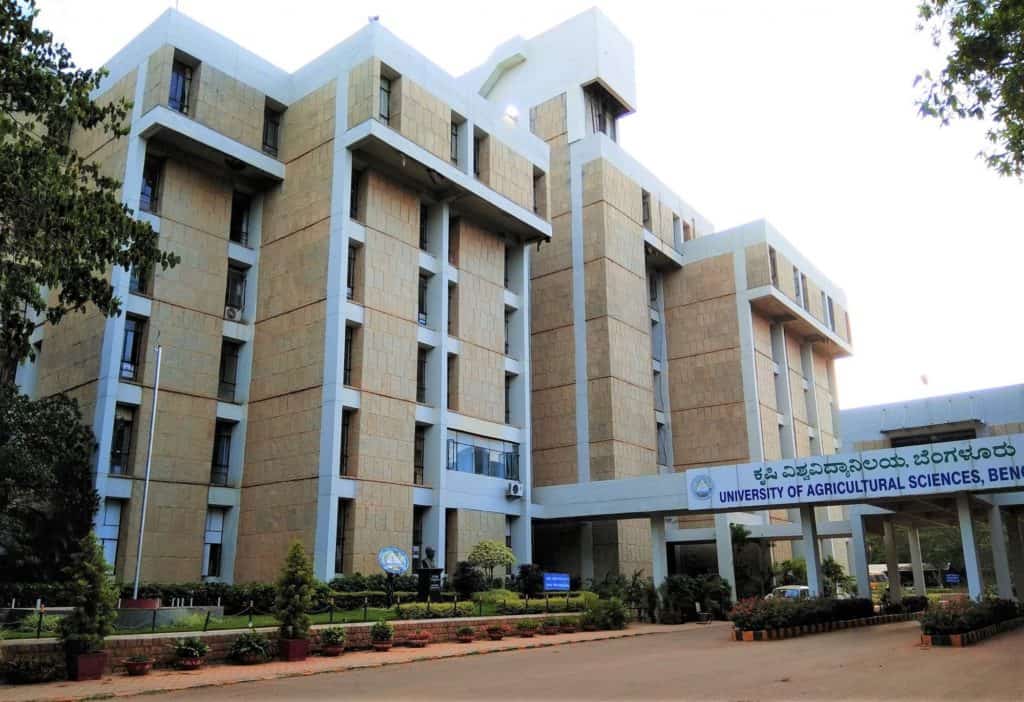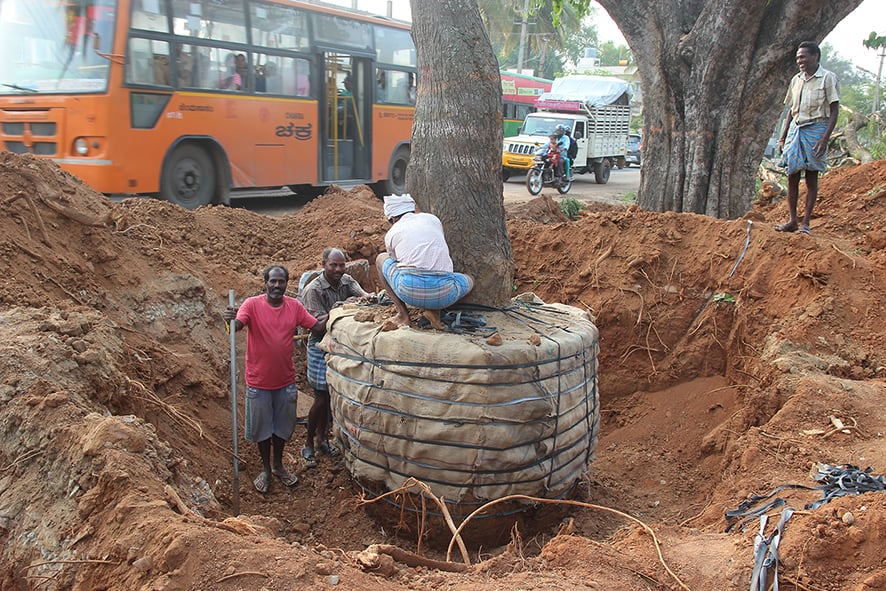With Metro rail coming up along many stretches, Bengaluru is set to lose a large number of trees. But many trees have also been marked for transplantation. BMRCL (Bangalore Metro Rail Corporation Ltd) has been giving work orders to contractors to transplant these trees.
Currently, BMRCL is the only agency undertaking tree transplantation in Bengaluru, says BBMP Tree Officer H S Ranganatha Swamy. In Bengaluru, as in other Indian cities, government agencies had rejected the idea of transplantation for years, citing high costs and low survival rates. In fact, when 10 trees were transplanted from the first Metro stretch in MG Road in 2007 as an experiment, only three survived.
But the concept has been catching on in the last few years, with citizen groups and BMRCL transplanting trees with a reasonable degree of success.
Read More: How to transplant trees marked for felling: lessons from Bengaluru
While ‘tree transplantation’ may conjure images of a tree simply being uprooted and placed in a pit elsewhere, the process actually needs a lot of effort, time, and money. And if transplantation and aftercare are not done properly, the tree could easily die.
Bengaluru now has a set of guidelines for tree transplantation, put together by the Tree Expert Committee (TEC) constituted by the High Court. The court had constituted the committee last year while hearing a PIL filed by the NGO Bangalore Environment Trust (BET) against indiscriminate tree felling by BMRCL. The TEC comprises academicians from the University of Agricultural Sciences (UAS), GKVK.
TEC is also responsible for inspecting trees and recommending their retention, transplantation or felling, in case of upcoming infrastructure projects. While the BBMP Tree Officer is responsible for taking decisions on tree felling and transplantation, now he can act only based on the recommendation of the TEC.
What do the tree transplantation guidelines say?
As per the guidelines, transplantation is recommended only for healthy, structurally sound trees, so that the tree has a higher chance of survival and the operation is cost-effective. The committee also recommends transplantation for trees with particular significance and high conservation value, but not for invasive exotic species. Transplantation can’t be done to a location with poor soil or during summers. Distance and accessibility to the new site is another factor.
Overall, the guidelines say many factors like the tree’s condition, size, species, conservation status, environmental and cultural factors, engineering conditions, cost-effectiveness, should all considered when deciding on transplantation. The High Court, while hearing the PIL, had also clarified that transplantation should be considered only if the tree can’t be retained at its location.

TEC Chairman Dr C Nagarajaiah, who also heads the Department of Forestry and Environmental Science at UAS, says the guidelines were evolved after about two months of research. “We checked previous transplantations done across Karnataka, spoke to other domain experts like soil scientists, and so on. It was a rigorous process.”
The guidelines recommend the following procedures for transplantation:
- Digging and root pruning: Sometimes root pruning is needed before transplant; in that case, sufficient time should be given for new roots to develop, before the tree is lifted. The guidelines mention digging and pruning to be done in multiple stages.
- Creating the root ball: A root ball (a mass formed with tree roots and the soil surrounding it) of reasonable size should be achieved before the tree is lifted. Larger, more mature trees need a bigger root ball for regrowth and stability.
- Trimming of tree roots: Before the tree is lifted, the roots underneath will have to be trimmed. The cuts must be clean so as to avoid the tearing and breaking of roots. Any torn root should be trimmed cleanly back up to the healthy tissues.
- Root treatment: The roots should be treated with anti-termite, anti-bacterial and anti-fungal chemicals as well as root hormones. The guidelines specify the quantity of these materials to be used.
- Cleaning tree crown: While the tree branches are commonly cut off during transplant, the TEC says such pruning of the crown reduces the tree’s ability to make food and build reserves. But the crown can be cleaned to remove damaged, diseased and crossed branches, so as to minimise susceptibility to pests and diseases.

- Preparing the new site: Before the tree is lifted, the new site should be fully prepared. The guideline specifies the pit size for different tree sizes. Vermicompost should be added in the trenches and watered, to maintain soil moisture and for easy establishment of roots.
- Lifting the tree: Damp hessian sacks (gunny bags) should be placed around the root ball and pinned to it. This ball should be kept moist until the transplant is completed. Tree lifting should be timed so as to enable direct delivery to the new site. The tree should be lifted by its root ball, and not by the trunk as this can cause serious injury. The tree should be watered before lifting and after transplant.

- Replantation: Any branches damaged in transit should be trimmed back. A soil saucer can be formed around the root ball circumference, for water retention and conserving soil moisture. Mulch can also be added. Fertilisation isn’t needed unless the tree has nutrient deficiency.
Read More: How High Court is curbing mindless tree felling in Bengaluru
Watering and maintenance of the trees after transplantation are critical. As per court orders in the PIL, BMRCL now requires its contractors to maintain the trees for three years from the date of transplantation. In BMRCL’s current work orders to the contractors, separate amounts are set aside for transplantation and maintenance.
[Despite such complex processes, how many transplanted trees really survive? Is the effort or cost really worth it? We explore this in Part 2 of this series.]
Good ! Transplantation is the best option, that too, the trees coming in the ORR Metro Line is 5000+. Of these, majority of the trees are very small. Hence can be transplanted easily